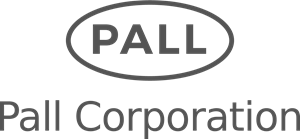Every successful project starts with a business case. As a project owner, your job is to develop the best possible business case for your project.
Not having a clear business case makes your project less efficient, and will cause you to lose valuable opportunities both during and after the project.
In this article, we analyze four ways to build the business case for an IoT product:
- Making money by adding value to an existing product
- Saving money by making an internal process more efficient
- Making money by creating a new business
- Saving money by making more efficient use of resources
In general, business cases where you plan to save money are better than business cases where the aim is to make money. Why? Because when you aim to save money, that means that the money already exists. If your business case involves making money, the money is simply not there yet, which increases the overall business risk of the project.
In the initial stages, a business case consists of two things:
- An estimate of the market need that is addressed by your solution
- An estimate the amount of that need that your solution realistically can capture
Both of these are difficult to estimate, but there are methods that can be used. Top-down market size estimates are easy to make and are an essential sanity check that the market is big enough. Bottom-up value estimates are more difficult, but are a good way to get a grasp of the value that your solution can bring.
After building the business case, you need to build a proof-of-concept to estimate how much of the business value you can reasonably capture. Then estimate the cost of delivering the solution, to complete the business case. We will get back to this in a follow-up article.
Now let’s look at the business cases one by one.
Make money by adding value to an existing product
Adding value to an existing product is often a winning strategy, especially if that product already is successful in the market. The trick is to find a feature that actually adds value to the product in the eyes of the customers.
The IoT can add value to a product in several ways:
- Directly make the product more efficient. For example, adding IoT to an industrial machine thereby allowing the machine to produce more items per hour.
- Improve the customer experience. For example, allowing the customer to monitor the product remotely if the product is deployed in an inaccessible location, such as a street light.
- Collect data that make the product better for each customer. For example, an industrial sensor can track when it needs to be replaced and inform the customer well in advance.
An example product in this category is remote-controlled wireless LED streetlights. The customer benefits from being able to remotely monitor their lamps, while reducing the overall power consumption.
Save money by improving an internal process
For most companies, there is plenty of money to save by making internal processes more efficient. Employee salaries often are the largest expense so anything that improves employees’ time can be used to build a strong business case.
An example product in this category is the office plants water sensors that improve the efficiency of plant care specialists on their daily tours.
To build a business case around optimizing an internal process, the following must be done:
- Assess the total cost of providing the internal process. Focus particularly on the time spent on individual activities.
- Estimate the improvements in each activity that can be attributed to the IoT product. Then compute the overall savings.
After establishing the business case, the proof-of-concept deployment of the first iteration of the product must focus on measuring the time savings. This information is then used to compute the total value produced by the system.
Office plants-as-a-service is an example of a product that optimizes an internal process to save money.
Make money by creating a new business
This is the most common business case for startup companies, but it is also one of the most difficult ways to find a successful business case. This is, compares the previous cases, there are more unknowns: there is no existing product for which additional value can be estimated, and there is no internal process for which the current cost can be assessed.
To build the case for creating a new business, you need to define the business need that your product will fulfill.
Ideally, the business need could be expressed in terms of the value that the need has to a specific person. In most cases, the best way to express the business need is as a problem. A good pattern to follow is:
- “Today, persons X pays Y to solve Z”
Then fill in the X, Y, and Z. A good business case has a large number of X’s, a high value for Y, and the problem Z is easily solved by your product.
An example business in this category is the TryLikes customer satisfaction buttons.
The business case for most startup companies is centered around creating a new business, such as the TryLikes customer satisfaction buttons
Save money by making more efficient use of resources
Many companies have resources that are valuable and there are many ways that the IoT can help make better use of those resources.
To build a business case around resource optimization, take two simple steps:
- Calculate the value of the utilization today.
- Estimate how much of an improvement to that utilization your IoT solution can bring.
The difference between those two numbers is the value of your solution.
To determine the actual numbers, you will need to build a proof-of-concept system, deploy it, and get real data on the utilization. Therefore, when building the proof-of-concept system, it is essential to design it to measure the utilization metric as its primary metric.
The hot desk monitoring system is an example of a product that optimizes the use of resources to provide value.
Conclusions
Every successful project starts with a strong business case. The business case consists of an assessment of the business need that the project fulfills and an estimate of the value that the project can capture. The larger the need, and the larger the value, the better the project.
Thingsquare helps companies identify and deliver value with the Internet of Things. Get in touch with us right now and let us discuss how we can work together to reach your goals!
 By Adam Dunkels, Thingsquare CEO
By Adam Dunkels, Thingsquare CEO








